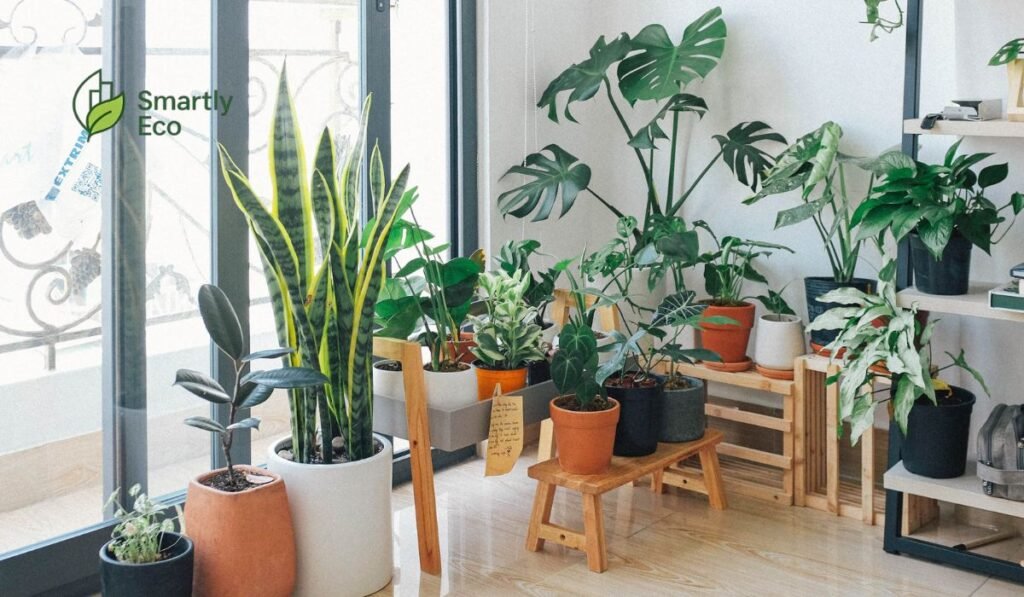Let’s be real—city life doesn’t leave us much time to think about “gardening.” Most of us are stuck between office deadlines, Zomato orders, and late-night scrolling. But here’s the catch: the solution to half our lifestyle problems—stress, hair fall, weak immunity, even sugar control—might be sitting quietly in a pot outside someone else’s balcony.
Medicinal plants aren’t just for old Ayurveda books. They’re practical, ridiculously affordable, and surprisingly easy to grow—even in cramped apartments.
Here’s why you should care:
- 🌱 Zero-cost supplements → Plants that save you thousands on pills.
- 🏙️ Urban-friendly → They thrive in balconies, terraces, even window grills.
- 💡 Science + Ayurveda approved → Backed by modern studies too.
- ❤️ Everyday fixes → From hair fall to diabetes, they’ve got you covered.
Let’s dive into five medicinal plants you can actually grow at home—no green thumb required.
1. Curry Leaves (The Secret to Strong, Dark Hair)
If you’ve been googling “best remedy for hair fall” at 2 AM, you’re not alone. Premature greying, thinning hair, and stress-induced shedding are almost a city epidemic. But the solution could be as simple as… curry leaves.
Known as kadi patta or sweet neem, this plant is more than a kitchen flavoring. Studies show curry leaves are rich in antioxidants, iron, and beta-carotene—nutrients that directly strengthen hair roots and prevent premature greying.
✅ How to use:
- Mix chopped leaves into chapati dough (tastes great, adds nutrition).
- Make a chutney with curry leaves, mint, and coriander.
- Add fresh leaves to rice or tempering instead of only using them for curry.
And the best part? Curry leaf plants almost grow on their own. If your neighbor has one, chances are baby plants are already sprouting around it. Just pick and pot one.
2. Tulsi (The Immunity & Sugar Regulator)
There’s a reason our grandmothers insisted on keeping a Tulsi plant at home—not just for spirituality but for health. Modern science agrees too.
A study from Nottingham University gave 60 diabetic patients Tulsi extract. The group that took Tulsi saw significant drops in blood sugar compared to those who didn’t. Another study noted improvements in blood pressure when Tulsi was consumed daily.
✅ How to use:
- Crush 2–3 leaves in warm water, drink every morning.
- Add to kadha for colds & flu.
- Slip into your water bottle for a mild, refreshing taste.
⚠️ Small tip: Don’t chew Tulsi leaves directly—they contain trace mercury. Swallow whole with water instead.
3. Moringa (The Natural Multivitamin)
If supplements were a scam you wanted to escape, Moringa (drumstick tree) is your answer.
Moringa leaves are called a superfood for a reason:
- 25× more iron than spinach
- 15× more potassium than bananas
- 10× more vitamin A than carrots
- 7× more vitamin C than oranges
- 9× more protein than yogurt
Basically, it’s nature’s multivitamin—minus the capsule.
👩 Urban Relatability:
When my friend shifted to Delhi, fatigue hit him hard. Gym trainers recommended protein powders, but a South Indian colleague casually gave him Moringa leaf powder. A month later, he felt lighter, stronger, and didn’t need his afternoon coffee to survive.
✅ How to use:
- Add 1 tsp Moringa powder to smoothies or dal.
- Use fresh drumstick pods in sambhar.
- Mix powdered leaves in atta for chapatis.
This is one plant worth giving a permanent spot in your kitchen garden.
4. Giloy (The Fever & Immunity Warrior)
Giloy (Tinospora cordifolia) is often called Amrita—meaning nectar of immortality in Ayurveda. And it lives up to the hype.
Modern studies confirm that Giloy:
- Boosts immunity (activates macrophages, the body’s defense cells).
- Reduces fever naturally—earning it the title herbal paracetamol.
- Helps manage arthritis and joint pain.
👨👩👧 Urban Relatability:
During the pandemic, Giloy suddenly became a household name. My neighbor, usually skeptical about Ayurveda, started boiling Giloy stems with Tulsi and ginger. He hasn’t stopped since—claims it’s the only thing that kept his seasonal fevers away.
✅ How to use:
- Boil stems in water, drink as kadha.
- Mix with Tulsi for maximum benefits.
- Available as powder too, but fresh stems are best.
5. Aloe Vera (The Skin & Gut Healer)
No plant list is complete without Aloe Vera. From skincare shelves to gut cleanses, it’s everywhere—and rightly so.
Science backs Aloe for:
- Healing burns and skin irritation.
- Supporting digestion and gut health.
- Controlling blood sugar (some studies link Aloe juice to reduced fasting glucose).
👩 Urban Relatability:
My cousin in Mumbai has the glowiest skin. Her “secret”? Not expensive serums—just Aloe gel directly from her balcony plant. She even blends Aloe juice with lemon in the mornings instead of packaged “detox” drinks.
✅ How to use:
- Apply fresh gel directly on face or hair.
- Drink Aloe juice (1–2 tsp, not excess).
- Keep a potted plant—it thrives with minimal care.
FAQs
Q1. Do these plants really work, or is it just “Ayurvedic hype”?
Fair question. Studies back them up—Tulsi helps regulate blood sugar, Moringa is packed with vitamins, and Giloy has proven immunity-boosting effects. Plus, if you ask any Indian household, they’ll have a story about using Tulsi for colds or Aloe for burns that actually worked. It’s science + tradition together.
Q2. I live in a flat with no balcony. Can I still grow them?
Absolutely. Many of these plants thrive in small pots on a windowsill or even in recycled bottles. Curry leaves and Tulsi don’t demand much sunlight, and Aloe Vera grows with minimal care. You don’t need acres—just a little corner with light.
Q3. How long before I start seeing benefits?
Some results are quick—like applying Aloe Vera gel on burns or using Tulsi in kadha for a cold. Others, like improved hair strength from curry leaves or boosted energy from Moringa, may take a few weeks of regular use. Think of them as lifestyle allies, not overnight fixes.
Q4. Can I skip supplements if I use Moringa or Giloy?
It depends. Moringa is a natural multivitamin, but if you have specific deficiencies, consult a doctor before tossing out supplements. Many urban professionals now use Moringa powder daily and find they don’t need as many pills, but balance is key.
Q5. Are there any risks in using these plants daily?
Yes, moderation matters. For example:
- Don’t chew Tulsi leaves directly (swallow them instead).
- Aloe Vera juice should be consumed in small amounts (1–2 tsp, not a full glass).
- Giloy is safe, but overuse can strain the liver in rare cases.
As with anything health-related—natural doesn’t always mean “as much as you want.” Use them wisely.
Conclusion
The best part? These plants don’t need acres of land. A balcony, a windowsill, or even a recycled bucket is enough. You don’t need to be a “plant person.” You just need to start with one pot.
🌱 Key Takeaways:
- Curry Leaves → Strong hair, cholesterol control.
- Tulsi → Sugar & blood pressure management.
- Moringa → Natural multivitamin.
- Giloy → Fever & immunity booster.
- Aloe Vera → Skin & digestion support.
👉 Instead of popping pills, why not let your balcony be your pharmacy?
Start with one plant today. Which one will you grow first—Curry leaves for your hair, or Tulsi for your immunity? Comment below and let’s make urban homes greener, healthier, and more self-reliant.
Nikita Palesha is a wellness advocate and eco-conscious writer who shares simple, sustainable tips for everyday living. She’s passionate about mindful choices that support a healthier planet and a balanced lifestyle.




